The redbone coonhound originated in the USA and is known for its resilience. They were initially bred in the late 18th century by hunters who wanted a breed capable of navigating a variety of terrains in pursuit of prey, from the steepest mountains to the densest swamps. However, their preferred prey was raccoons, as their name suggests. These dogs have a medium to large build, typically weighing between 45 to 70 pounds and measuring around 21 to 27 inches tall. While redbone coonhounds have many appealing traits, it’s their stunning deep red coat that always catches peoples’ attention. But are these dogs healthy? This article will cover the Redbone coonhound’s lifespan and provide tips on keeping them healthy and happy.
Redbone Coonhound Lifespan
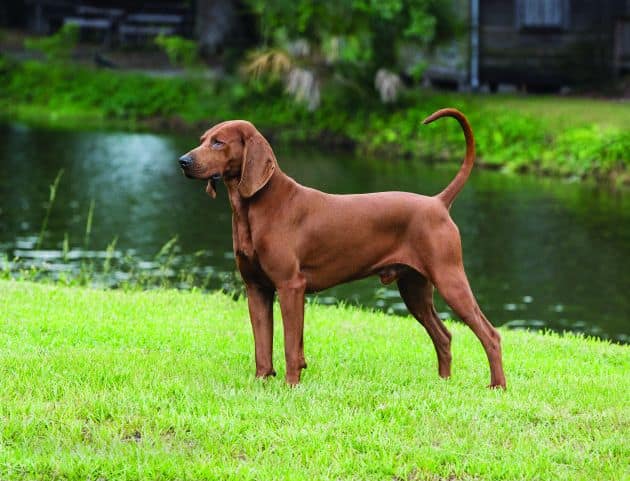
While redbone coonhounds have many appealing traits, it’s their stunning deep red coat that always catches peoples’ attention.
©127177p / CC BY-SA 4.0 – Original / License
The redbone coonhound’s lifespan usually ranges between 12 to 15 years. While they are typically healthy dogs, they are still susceptible to several health conditions. Therefore, it’s essential for prospective pet parents to know about these health concerns and act accordingly if they see any symptoms.
Redbone Coonhound Health Issues
This stunning bread is prone to less health conditions than most other breeds, but they are still prone to certain conditions, including:
Panosteitis
Redbone coonhounds may suffer from Panosteitis, a bone and joint disease where the dog experiences inflammation on the bone, causing pain and lameness. To help prevent Panosteitis, pet owners can feed their redbone coonhound puppies a large-breed puppy food. However, vets can also treat with medication, like anti-inflammatory drugs. Once under treatment, owners need to limit activity so their dogs can recover and keep the pain at bay.
Hip and Elbow Dysplasia
This condition is caused by the hip or elbow bone not fitting into the socket properly, causing pain. Symptoms include muscle loss, reduced energy levels, and limping. Treatments vary from surgery, dietary, and other lifestyle changes, depending on the leading cause of the dysplasia.
Obesity
Because these dogs are so active, they tend to eat a lot, which also makes the redbone coonhound susceptible to obesity. Therefore, pet owners should never overfeed them. Obesity in redbone coonhounds can also lead to joint conditions and diabetes.
Progressive Retinal Atrophy
PRA, or progressive retinal atrophy, slowly causes vision loss. One of the earliest symptoms of this condition is night blindness, and unfortunately, there is no cure. However, dogs usually find it easy to adapt to losing their site. If you buy your redbone coonhound from a breeder, they should screen for this condition so it is not passed onto future generations.
Coonhound Paralysis
This applies more to the redbone coonhounds that are still used for hunting, as it results from raccoon scratches or bites. The raccoon’s saliva can inflame a dog’s nerves, causing an immune reaction. It can affect their breathing and gait, and they should be seen by a veterinarian immediately for treatment.
Healthy Activities for Redbone Coonhounds
Since the redbone coonhound is a really active breed, they need plenty of physical stimulation. Here are several activities you can do with your dog to keep them healthy and happy.
Play Fetch
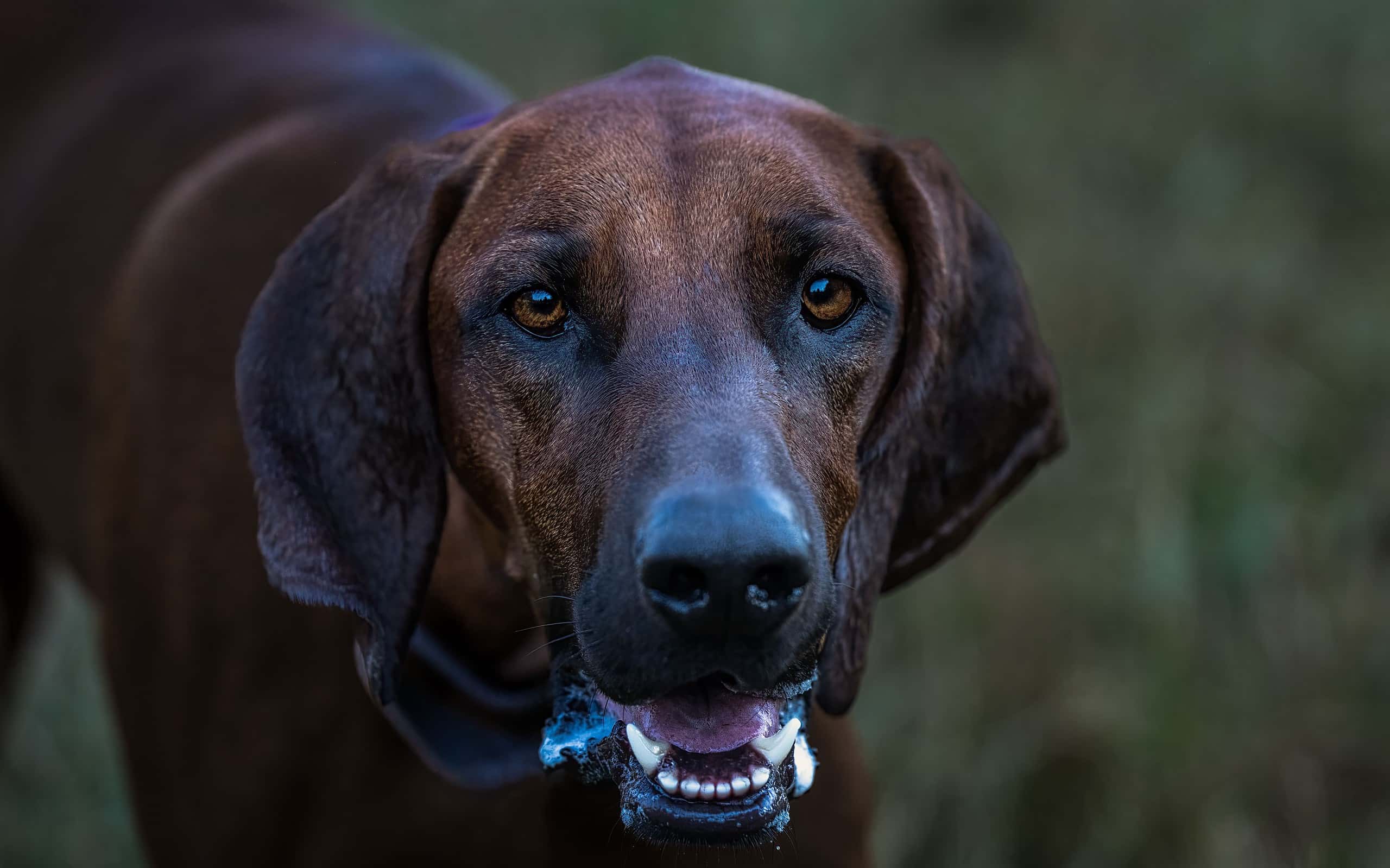
You don’t even need a ball for this game; you can use a rope, stick, frisbee, or stuffed toy. Anything will work if your pup is prepared to chase and retrieve.
©Wirestock/iStock via Getty Images
This excellent game is a classic and a favorite among redbone coonhounds as they love to fetch. You don’t even need a ball for this game; you can use a rope, stick, frisbee, or stuffed toy. Anything will work if your pup is prepared to chase and retrieve. However, always play fetch outside; your redbone coonhound will surely break something inside in excitement. Furthermore, owners can purchase scented toys for fetch, satisfying their energy needs and stimulating their minds.
Obedience Training Outdoors
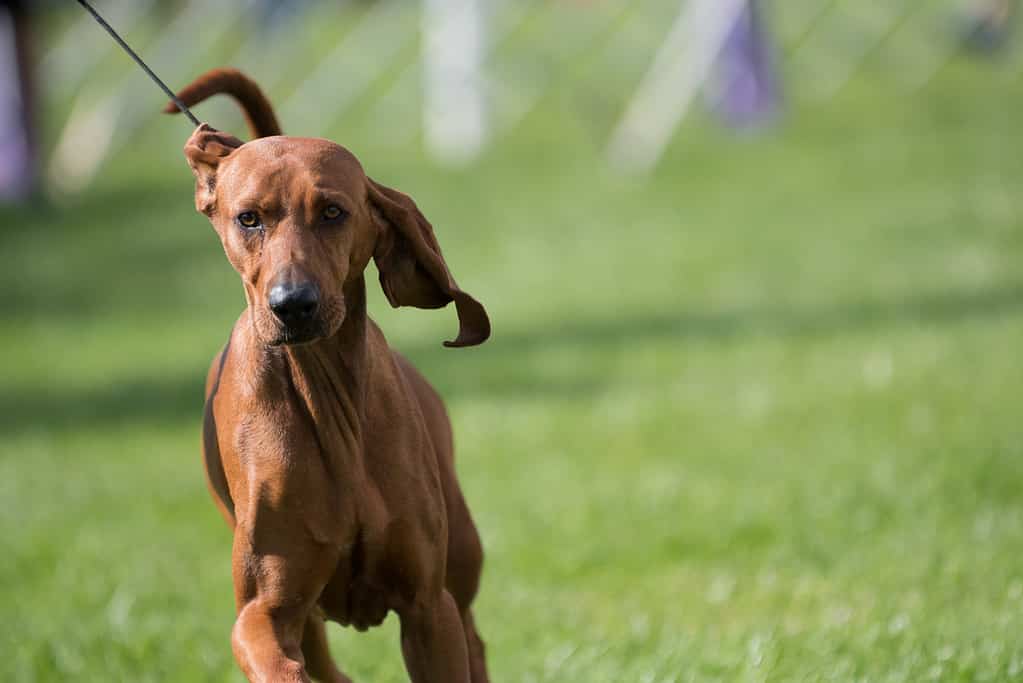
Ensure you are in a secluded area, as the more distractions there are, the harder it will be for your redbone coonhound to listen and obey commands.
©Kyle Reynolds/iStock via Getty Images
Another healthy way to provide physical and mental stimulation for your redbone coonhound is obedience training. This is not only beneficial to your dog but for you as well. Nobody wants an unruly large breed dog. Furthermore, it is a great way to bond with your pup. However, ensure you are in a secluded area, as the more distractions there are, the harder it will be for your redbone coonhound to listen and obey commands. However, the truest testament to your training abilities is when your dog does listen to you when there are many distractions around them.
When training outdoors, ensure you bring along lots of treats and water. In addition, they respond best to positive reinforcement, so do not yell or spank them. In fact, training sessions should be as fun and encouraging as possible so your dog associates it with playtime rather than punishment.
Play in Water or Sprinklers
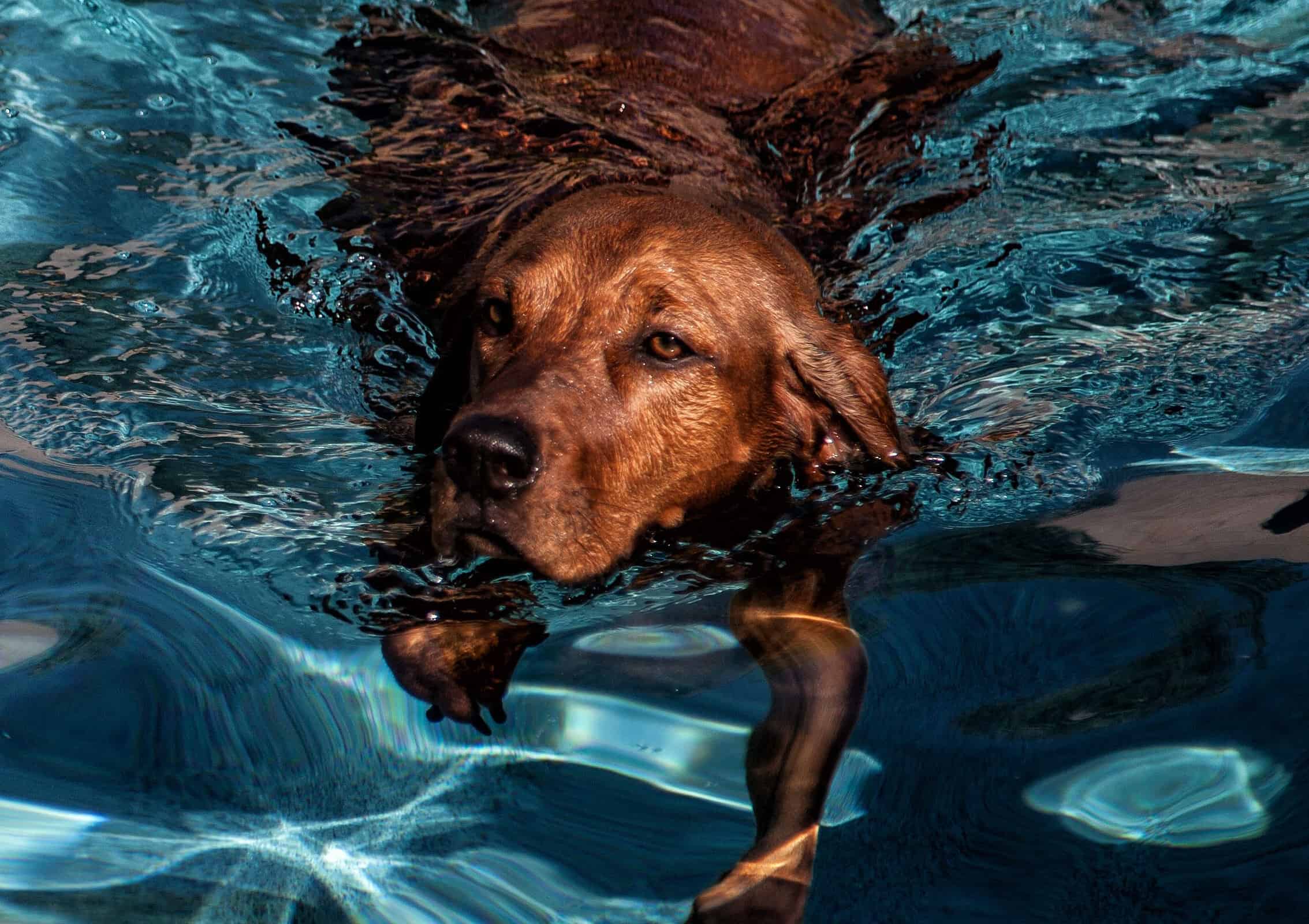
It’s also an excellent way for you and your dog to cool off during a hot summer’s day.
©videodet/iStock via Getty Images
It is common for redbone coonhounds to enjoy the water, so running around in the sprinklers is both entertaining and satisfies their physical needs. It’s also an excellent way for you and your dog to cool off during a hot summer’s day. Just ensure to have a towel at hand because they will more than likely roll in the sand or mud right after.
Go to a Dog Park
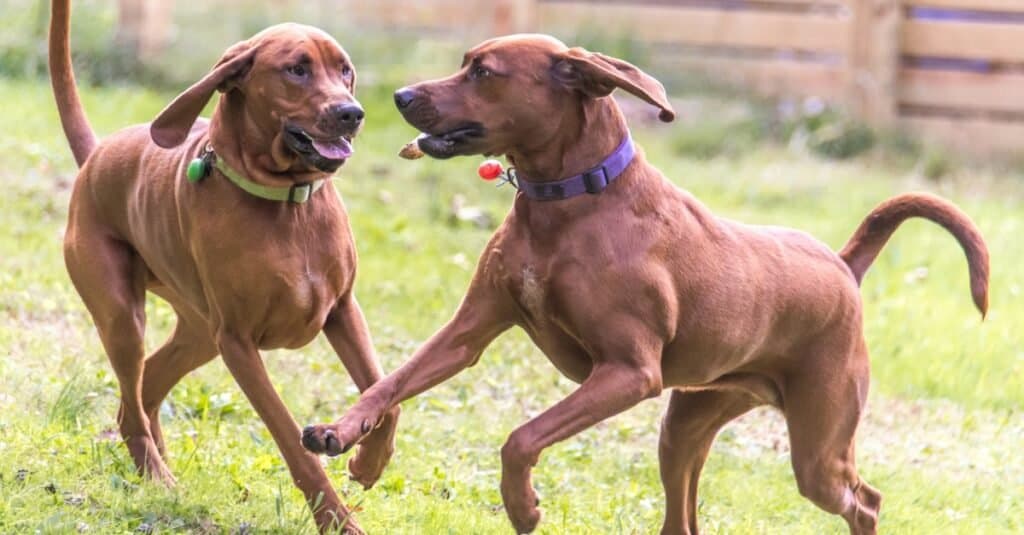
It is an excellent way of socializing your redbone coonhound, helping them get comfortable around other dogs.
©Marcello Sgarlato/Shutterstock.com
Taking your redbone coonhound to the dog park provides them with plenty of stimulation, visuals, smells, and more. It is also a great place to play fetch or any other fun activity you do with your pet, so ensure to bring toys and snacks. However, be mindful of the other dogs at the park because you don’t want a fight over food. Furthermore, it is an excellent way of socializing your redbone coonhound, helping them get comfortable around other dogs.
Go for a Walk

It is the easiest and cheapest way to exercise your redbone coonhound, which is why it remains the most popular form of physical activity. Additionally, it is a good time to teach your dogs commands while enjoying the outdoors.
©devnenski/iStock via Getty Images
This is an oldie, but goodie. Just strap on their harness and leash and head straight out the door for a lovely, refreshing walk. It is the easiest and cheapest way to exercise your redbone coonhound, which is why it remains the most popular form of physical activity. Additionally, it is a good time to teach your dogs commands while enjoying the outdoors. Furthermore, taking your dog for a walk is a great bonding experience, bringing you and your pup closer together. Going for a walk also stimulates your redbone coonhound’s senses with lots of new sounds and smells.
Go Hiking
Taking your redbone coonhound on a hike is a fun activity for both of you. As mentioned before, they are very active dogs and will enjoy the freedom. However, these dogs are not suitable companions for advanced hiking trails. Instead, they do better on moderate hiking trails, which are more suitable to their abilities. Advanced hiking trails usually have more challenging routes, requiring the dogs to go up or down steep slopes, elevations, and obstacles. Therefore, start with a path similar to their usual walking route and work toward something more challenging. As people usually hike in a preserve or state park, the wildlife in the area provides plenty of stimulation for your dog and pique their curiosity.
The photo featured at the top of this post is © Tanarot1992/Shutterstock.com
Ready to discover the top 10 cutest dog breeds in the entire world?
How about the fastest dogs, the largest dogs and those that are -- quite frankly -- just the kindest dogs on the planet? Each day, AZ Animals sends out lists just like this to our thousands of email subscribers. And the best part? It's FREE. Join today by entering your email below.
Thank you for reading! Have some feedback for us? Contact the AZ Animals editorial team.







